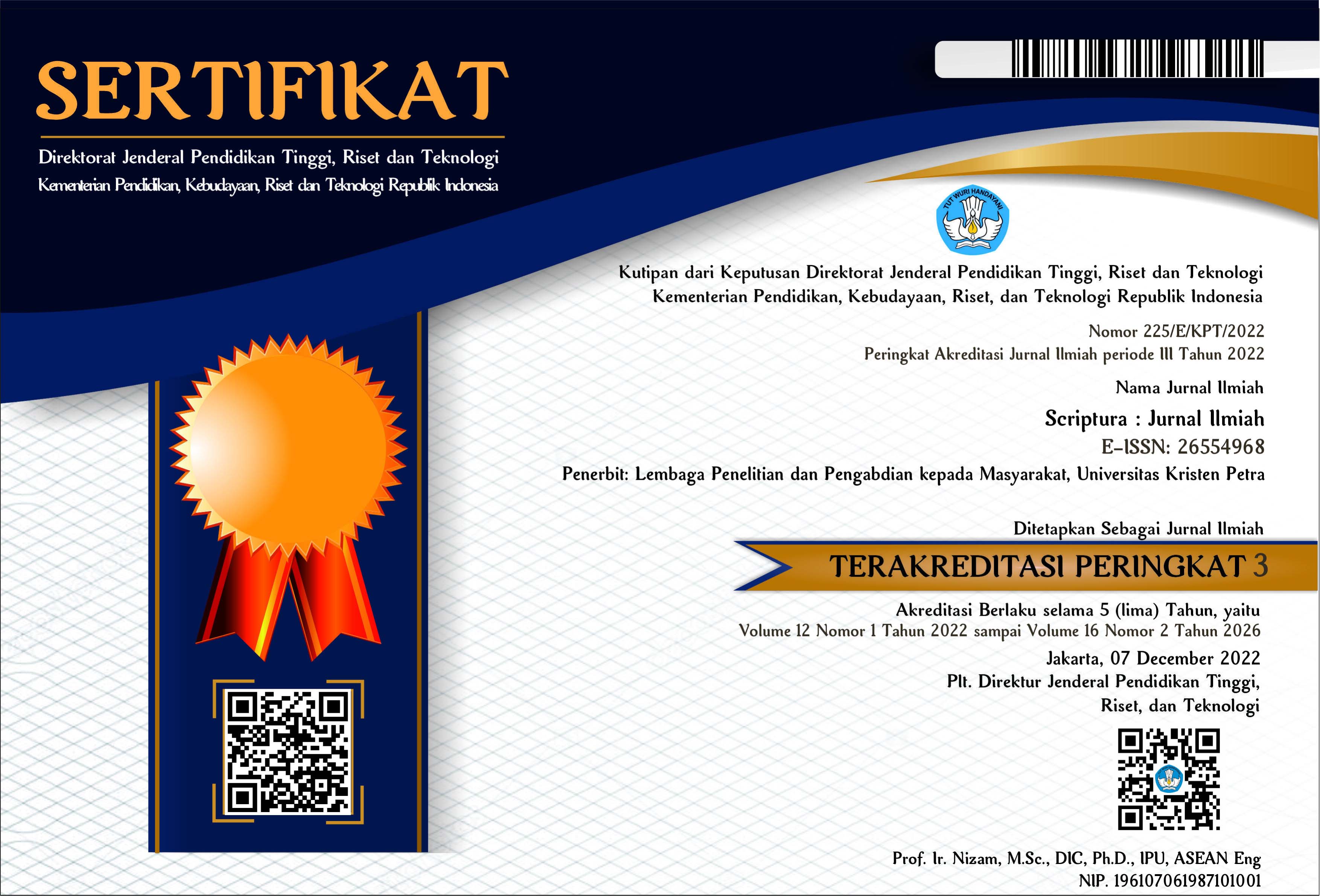PENELITIAN KHALAYAK DALAM PERSPEKTIF RECEPTION ANALYSIS
 :
:
https://doi.org/10.9744/scriptura.3.1.1-7
Keywords:
Reception analysis, active audiencesAbstract
Reception analysis provides a means of understanding media texts by understanding how these texts are read by audiences. Theorists who analyze media through reception studies are concerned with the experience of media (print, broadcasting, online media) and it takes a closer look at what is actually going on. Reception analysis concentrates on the audience themselves and how they come to a particular understanding view of a text, and how meaning is created through that experience. An important concept of reception theory is that the media text—the individual movie or television program—has no inherent meaning in and of itself. Instead, meaning is created in the interaction between spectator and text; in other words, meaning is created as the viewer watches and processes the movie. Reception theory argues that contextual factors, more than textual ones, influence the way the spectator views the movie or television program. Contextual factors include elements of the viewer's identity as well as circumstances of exhibition, the spectator's preconceived notions concerning the movie or television program's genre and production, and even broad social, historical, and political issues. In short, reception theory places the audience in context, taking into account all of the various factors that might influence how she or he will read and contruct meanings from the text, such as in form of still images, moving images, or written. To understand the meanings that people take from a text it is necessary to get closer to individual audience members and engage with them at a personal level-qualitative research becomes a necessity There are obvious implications for research methodology. Quantitative research is not suited to investigating the construction of meaning.References
Aryani, Kandi. 2006. Analisis Penerimaan Remaja terhadap Wacana Pornografi dalam Situs-Situs Seks di Media Online. Jurnal Masyarakat Kebudayaan dan Politik. Tahun XIX. Nomor 2, April. ISSN 0216-2407. Surabaya : FISIP Unair.
Baran, Stanley J. 2003. Mass Communication Theory; Foundations, Ferment, and Future, 3rd edition. Belmon, CA : Thomson
Jensen, Klaus Bruhn. 2002. A Handbook of Media and Communication Research, Qualitative and Quantitative Methodologies. London : Routledge [CrossRef]
Jensen, Klaus Bruhn and Nicholas W. Jankowski 2003. A Handbook of Qualitative Methodologies for Mass Communication Research. London : Routledge
Khun, A. 2002. An Everyday Magic: Cinema and Cultural Memory. London : IB Tauris.
Lyytikäinen, Katariina. Mass Communication. www.media.hut.fi/~as75120/2003/english_material/final/MassCommunication.pdf, diakses 17 Pebruari 2008.
Lindlof, Thomas R and Bryan C. Taylor. 2002. Qualitative Communication Research Methods. 2nd Edition. London : Sage Publications.
Littlejohn, Stephen W. 1999. Theories Of Human Communication. London : Wadsworth Publishing Company
Lorimer, Rowland. 1994. Mass Communications: A Comparative Introduction. Manchester, UK: Manchester University Press.
McQuail, Denis. 1997. Audience Analysis. London. SAGE Publications, Inc.
Neuman, W. Lawrence. 2000. Social Research Methods: Qualitative and Quantitative Approaches. Needham Height MA : Allyn & Bacon.
Street, John. 2001. Mass Media, Politics and Society. New York: Palgrave
Downloads
Published
How to Cite
Issue
Section
License
Authors who publish in the SCRIPTURA Jurnal Ilmiah agree to the following terms:
Authors retain unrestricted copyright and full publishing rights. The authors grant the Publisher the right of first publication, with the work simultaneously licensed under the terms and conditions of the Creative Commons Attribution License (CC BY) that allows for unlimited use, distribution, and content reproduction on all media as long as the original author and source are properly acknowledged and cited.

















